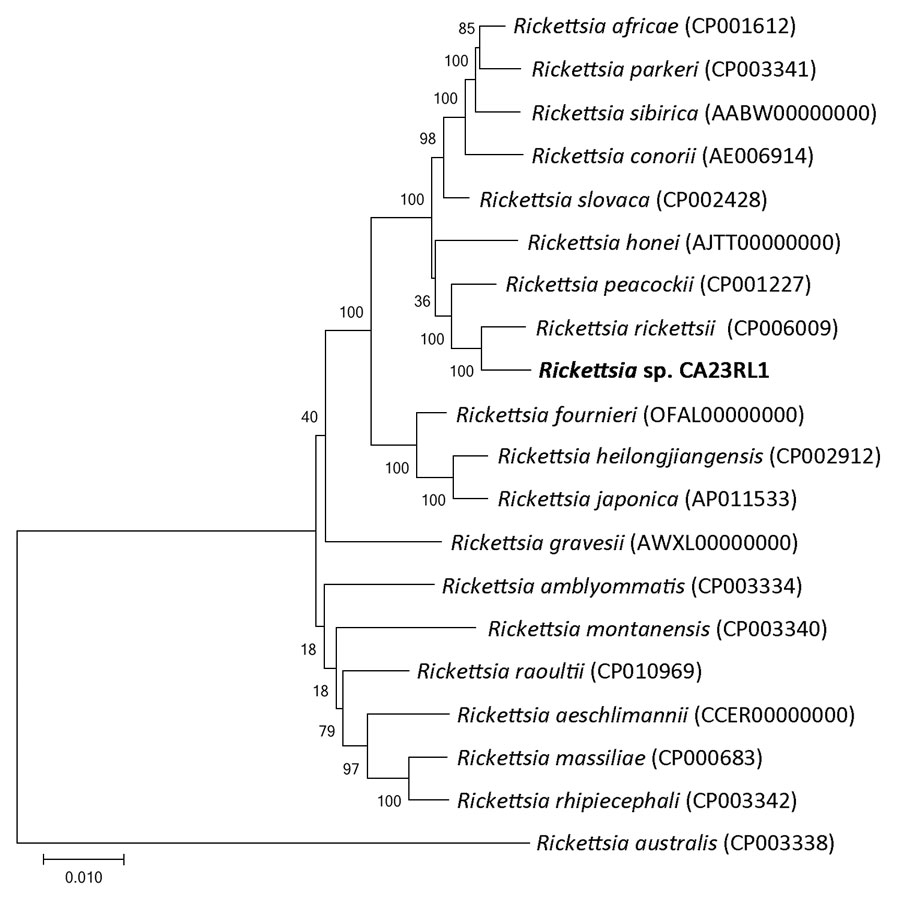Volume 30, Number 7—July 2024
Research
Newly Recognized Spotted Fever Group Rickettsia as Cause of Severe Rocky Mountain Spotted Fever–Like Illness, Northern California, USA
Figure

Figure. Maximum-likelihood phylogenetic tree of concatenated multilocus sequences in study of newly recognized spotted fever group Rickettsia as cause of severe Rocky Mountain spotted fever–like illness, northern California, USA. Rickettsia sp. CA23RL1 (bold text) occupies a distinct branch most closely related to R. rickettsii. Rickettsia australis, a transitional group Rickettsia, was included as an outgroup. Bootstrap values for 1,000 replicates are provided at each branch of the phylogenetic tree. GenBank accession numbers are provided in parentheses. Scale bar indicates evolutionary distance as measured by the number of substitutions per site.
Page created: May 17, 2024
Page updated: June 22, 2024
Page reviewed: June 22, 2024
The conclusions, findings, and opinions expressed by authors contributing to this journal do not necessarily reflect the official position of the U.S. Department of Health and Human Services, the Public Health Service, the Centers for Disease Control and Prevention, or the authors' affiliated institutions. Use of trade names is for identification only and does not imply endorsement by any of the groups named above.